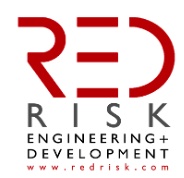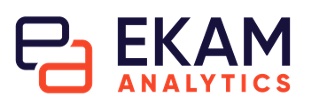
Welcome
August 2024
Welcome to our newsletter for August. As everyone rushes off on their summer holidays, here are some updates from Oasis and its community to read while relaxing next to the pool or on the beach. As always, we encourage your engagement, so please get in touch with any feedback or questions. Have a great summer!

Quotech Adopts Oasis for EM
Quotech, that develops “truly useful, properly integrated” technology platforms for underwriting and broking teams, has built Open Exposure Data (OED) into Quex, its new exposure management platform.
CEO and founder Guillaume Bonnissent, a former Hiscox underwriter and CUO at White Oak, says his company was built out of frustration. “When shopping for an underwriting tool as CUO, I found that nothing offered off the shelf, would really eliminate our pain-points,” he says. “So I used my coding skills to build one.”
A few years later, after Convex and others bought that platform, Guillaume’s team built a similarly useful exposure management platform – one designed to better meets users’ needs. “Innovation in multiple areas of exposure management technology was overdue, not least in the way a gold-standard EM system encodes, transmits, and interprets the data that defines risks. The Open Exposure Data standard curated by Oasis is the obvious alternative. It allows seamless, effortless integration with almost any other platform,” Bonnissent says.
“Whether Quex users have adopted familiar vendor models, built their own on the Oasis platform, or a combination of both, to embrace the universality of OED simply makes obvious sense. With new data sources to assess risk exposure coming on line every day to be incorporated into daily analysis, it makes utmost sense to ease ingestion through the widespread adoption of a common, open standard.”
For more information contact: info@quotech.io

RED Risk Announces the Implementation of their 2024 European Earthquake Model onto the Oasis Platform
The European Earthquake Risk Model
The European Earthquake Risk Model is a borderless catastrophe model leveraging the latest research on hazard, exposure and vulnerability modelling for assessing earthquake risk across 44 countries in Europe.
The model employs a fully probabilistic chain of Monte Carlo simulations for estimating earthquake-induced losses, propagating uncertainties across all stages of analysis from the stochastic events catalogue to ground motion, damage and, finally, loss. Consistent with the Open Data Standards (ODS), estimates of damage are translated into financial losses associated with the four supported insurance coverage types of buildings, other construction, contents, and business interruption for a wide selection of occupancy and construction classes.
- The seismic hazard module is largely based on the ESHM20 (Danciu et al., 2021[1]), leveraging the accumulated knowledge and harmonized datasets related to seismicity in Europe developed as a result of collaboration longer than a decade between researchers from all around the globe. The model utilises the foundational building blocks of ESHM20 to generate an appropriate representation of the seismic hazard across Europe in the form of a 30,000-year stochastic earthquake catalogue and a regionally-adjusted backbone Ground Motion Model (GMM), both connected by the collapsed logic tree framework of ESHM20.
- A new probabilistic seismic hazard model, called Modello di Pericolosità Sismica 2019 (MPS19), has been recently proposed for the Italian territory, as a result of the joint effort of more than one hundred of the most prominent researchers of the national scientific community. This model is based on 11 groups of earthquake rupture forecast inputs and, particularly, on 5 area-source seismogenic models. RED’s model offers the option of using this alternative hazard model to analyse Italian-based insurance portfolios.
- Risk assessment of spatially distributed portfolios requires quantification of the joint occurrence of ground-motion intensity measures across sites caused by each earthquake. There is empirical evidence that these intensity measures are spatially correlated. Neglecting spatial correlation causes a bias in loss estimates, overestimating the frequent losses and underestimating rare losses. RED’s model uses the most recent accepted model to explicitly sample spatially correlated ground motions for each event in the stochastic catalogue.
- A new harmonized database of vulnerability curves (also known as damage functions) was developed differentiated by country, material, lateral load resisting system, building height, and design code level. The vulnerability module is based on the most recent research findings and on more than 300 fragility functions, vulnerability functions and damage matrices from all major empirical, analytical and hybrid studies about building vulnerability across Europe, comprising large UE research projects (Risk-UE, LessLoss, Syner-G). These functions have been calibrated and validated considering the large database of damage and loss data that RED gathered from the main seismic events that affected Europe.
- A country-specific high-resolution (1km x 1km grid) Industry Exposure Database (IED), validated with satellite imagery, was developed based on latest information about building characteristics across Europe and from multiple data sources, including national and international housing statistics and the findings of all the main recent EU-founded projects. The IED covers seven core occupancies: residential, wholesale and retail, hotels and restaurants, healthcare, educational, offices and industrial.
- All the specific modules of the model have been separately calibrated and validated based on seismological evidence, damage and loss data from historical events, and industry loss experience. Loss validation follows a quantitative approach, evaluating the probabilistic (and geographical) distribution of event losses across different building classes. RED’s IED has been instrumental in carrying out many of the validation exercises carried out for the many European countries affected by earthquakes in the last decades.
Oasis and RED
Over the last years, Oasis LMF and RED have been working on achieving compatibility between RED’s 2024 European Earthquake Risk Model and the Oasis platform. RED embedded its model into the Oasis LMF through the so-called complex model integration approach. The release of RED’s model on the Oasis Platform opens up possibilities for future collaboration and the implementation of other RED models on the platform. RED is interested in continuing its collaboration with Oasis, with the objective of creating a synergy that highlights RED’s expertise in developing and implementing risk assessment models for various perils across different regions of the world, along with the open and transparent features of the Oasis LMF.
About RED
RED S.p.A. (http://www.redrisk.com) was founded in 2008 under a different name and reincorporated in 2012 as RED Risk Engineering + Development, a transition that increased its range of services to include natural and human-induced hazard and risk assessment, with a particular focus on earthquakes, floods, tropical cyclones, rainfall, and climate-related perils. RED offers highly specialized consulting services in the field of risk assessment for natural disasters. RED is based in Pavia, Italy and counts on employees and collaborators with Master or PhD degrees, some of them involved in academic scientific research and teaching activities with international institutions.
[1] Danciu et al 2020. The 2020 European Seismic Hazard Model: Overview and Results. https://doi.org/10.5194/egusphere-2023-3062

Ekam - A New Provider of Cat Analytics
Ekam Analytics: Your Partner in Re(Insurance) Excellence
Ekam Analytics is a specialised Re(Insurance) service provider, delivering tailored solutions that support the entire insurance process. Their expertise spans catastrophe modelling, exposure management, and more, catering to Re(Insurance) Carriers, MGAs, Wholesalers, and Brokers.
Seasoned Professionals, Agile Solutions
Their team of seasoned professionals brings decades of industry experience to the table. With their agile onboarding process, clients can be up and running in a fraction of the time it takes others. Their integration is seamless, ensuring a smooth transition.
Ekam prioritises ownership and accountability, ensuring that the client needs are met with precision and care.
Comprehensive Services for Optimized Operations
Ekam offers a comprehensive suite of services designed to optimise insurance industry operations. Within the field of catastrophe modeling, they provide both insurance and reinsurance solutions across the following areas:
- Modeling services: Cleansing, modeling, reporting, and results analysis
- Portfolio reconciliation and reporting
- Event loss reporting
- Model validation support
- Regulatory reporting support
Unity in Excellence
Ekam is derived from Sanskrit, signifying unity and oneness – principles that are integral to their identity. In every interaction with their clients and employees, they strive to embody the essence of Ekam, reinforcing their commitment to a meaningful and mutually beneficial relationship.
Ekam Analytics are new associate members of Oasis and can provide services and analytics around the Oasis platform.
Website: https://ekam-analytics.com/

Oasis to Offer Deterministic Models for RDS Analytics
One of the projects funded by the Insurance Development Forum (IDF) for 2024 is the development of open, deterministic models on the Oasis platform for scenarios and events for developing countries.
These deterministic models will contain peril scenarios or footprints from existing model vendors on Oasis, with associated vulnerability functions to support users with their realistic disaster scenarios (RDS) analytics for specific developing countries.
We are currently working with the IDF to identify the perils and regions of interest and these models will be free to use (subject to agreement and licensing conditions of the footprints files) by the end of Q1 2025.
In addition to this, we are working on developing a catalogue of stochastic and historical event footprints for multiple key events (both historical and stochastic) across the US, Europe and Australia that could be used for any RDS analytics or in conjunction with those events requested by Lloyd's for their annual RDS return.
Our overall aim is to not only promote Oasis and the use of deterministic models for developing countries but to support the industry on regulatory responsibilities.
Please get in touch if you want to hear more or get involved.

Oasis Insight Conference - London 2025
SAVE THE DATE
|
|
Oasis Insight Conference - London 2024
Materials and photos now available on the Oasis Website here
Please send us any thoughts, feedback, comments and questions via email.
OASIS MODEL PROVIDERS AND PARTNERS
ARA | AXA | CatRisk Solutions | Columbia University | COMBUS | Concinnity Risks | CoreLogic | ERN | Fathom | Gallagher Re | GEM | Guy Carpenter | Howdens | Image Cat | Impact Forecasting | JBA Risk Management | KatRisk LLC | Nasdaq | NTU | PIK | Renew Risk | Risk Frontiers | RMSI |Swiss Re | UCL | Xceedance
